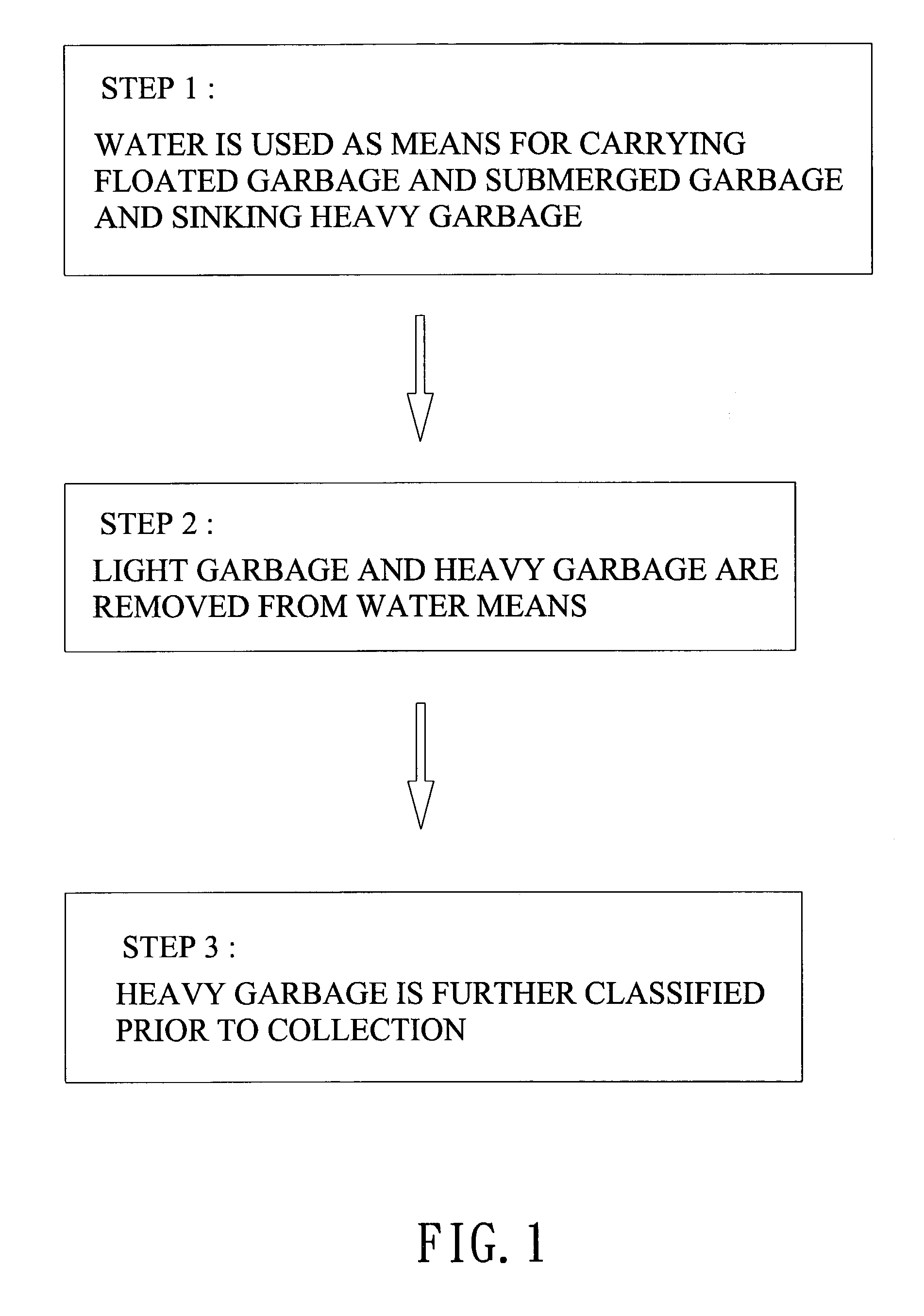Apparatus and method of separating heavy materials in garbage from light ones and classifying the heavy garbage for collection
a technology of heavy materials and garbage, applied in the field of garbage disposal, can solve the problems of severe air pollution, buried garbage may pollute the ground water and soil, and the problem of polluting the underground water and soil remains, and achieve the effect of effective separation
- Summary
- Abstract
- Description
- Claims
- Application Information
AI Technical Summary
Benefits of technology
Problems solved by technology
Method used
Image
Examples
Embodiment Construction
[0033]Referring to FIG. 1, there is shown a sequence of method steps performed by an apparatus of separating heavy materials in garbage from light ones and further classifying the heavy garbage for collection in accordance with the invention.
[0034]In step 1, water is used as means for carrying floated and submerged garbage and sinking heavy garbage. In detail, pour garbage into a water container containing water. Water is sprayed from a plurality of injection nozzles toward a bottom of an inclined division board in the water container so as to form a whirling flow in the water container. Hence light materials in garbage are flushed by the whirling flow to float on water in the water container. Such light materials (e.g., plastic bottles, papers, etc.) are floated because their specific weight is less than that of water. Also, some materials such as fruits, cloth products capable of absorbing water (e.g., diapers) are submerged in water.
[0035]The submerged garbage has more or less bu...
PUM
| Property | Measurement | Unit |
|---|---|---|
| surface | aaaaa | aaaaa |
| size | aaaaa | aaaaa |
| sizes | aaaaa | aaaaa |
Abstract
Description
Claims
Application Information
 Login to View More
Login to View More - R&D
- Intellectual Property
- Life Sciences
- Materials
- Tech Scout
- Unparalleled Data Quality
- Higher Quality Content
- 60% Fewer Hallucinations
Browse by: Latest US Patents, China's latest patents, Technical Efficacy Thesaurus, Application Domain, Technology Topic, Popular Technical Reports.
© 2025 PatSnap. All rights reserved.Legal|Privacy policy|Modern Slavery Act Transparency Statement|Sitemap|About US| Contact US: help@patsnap.com



